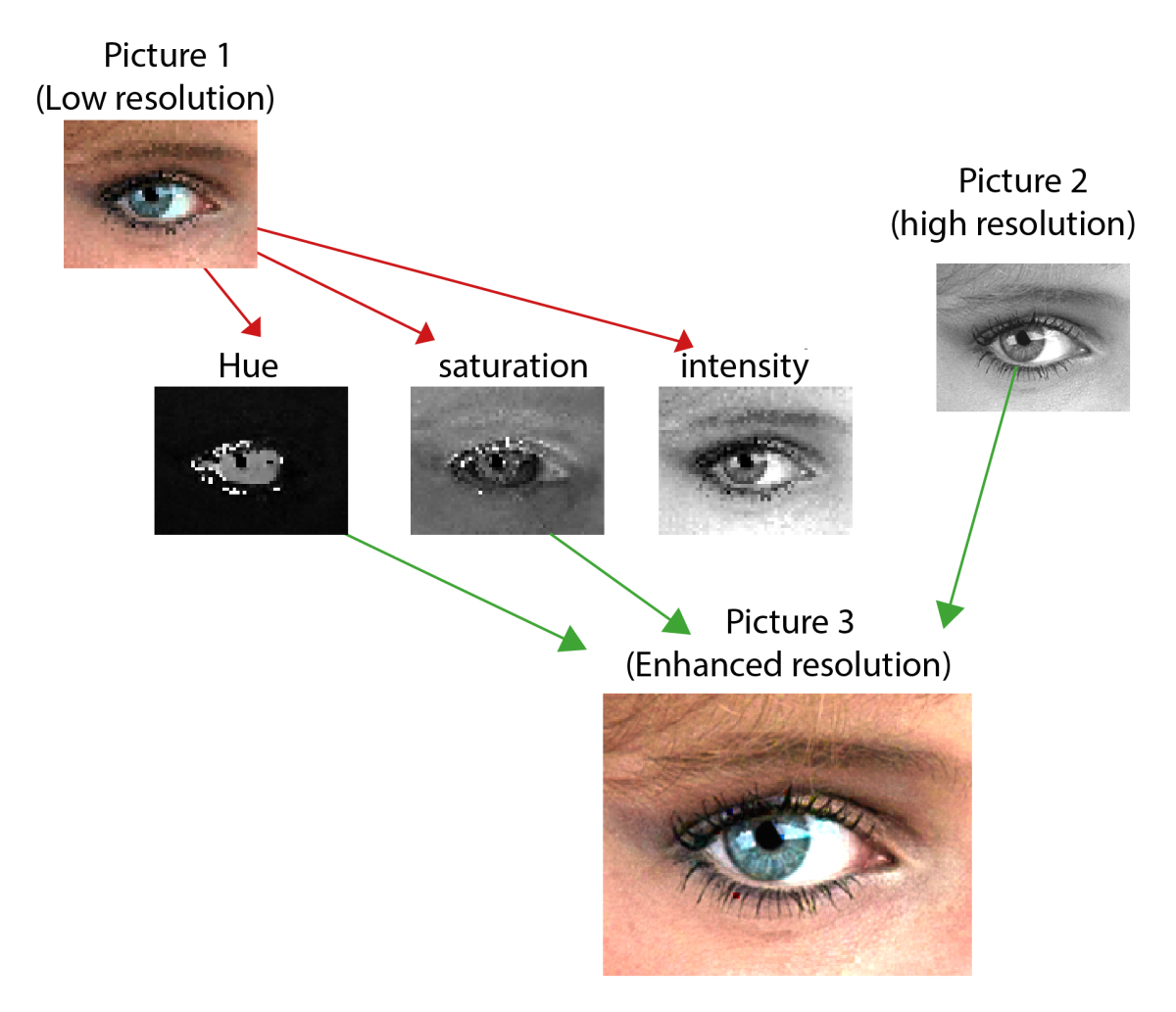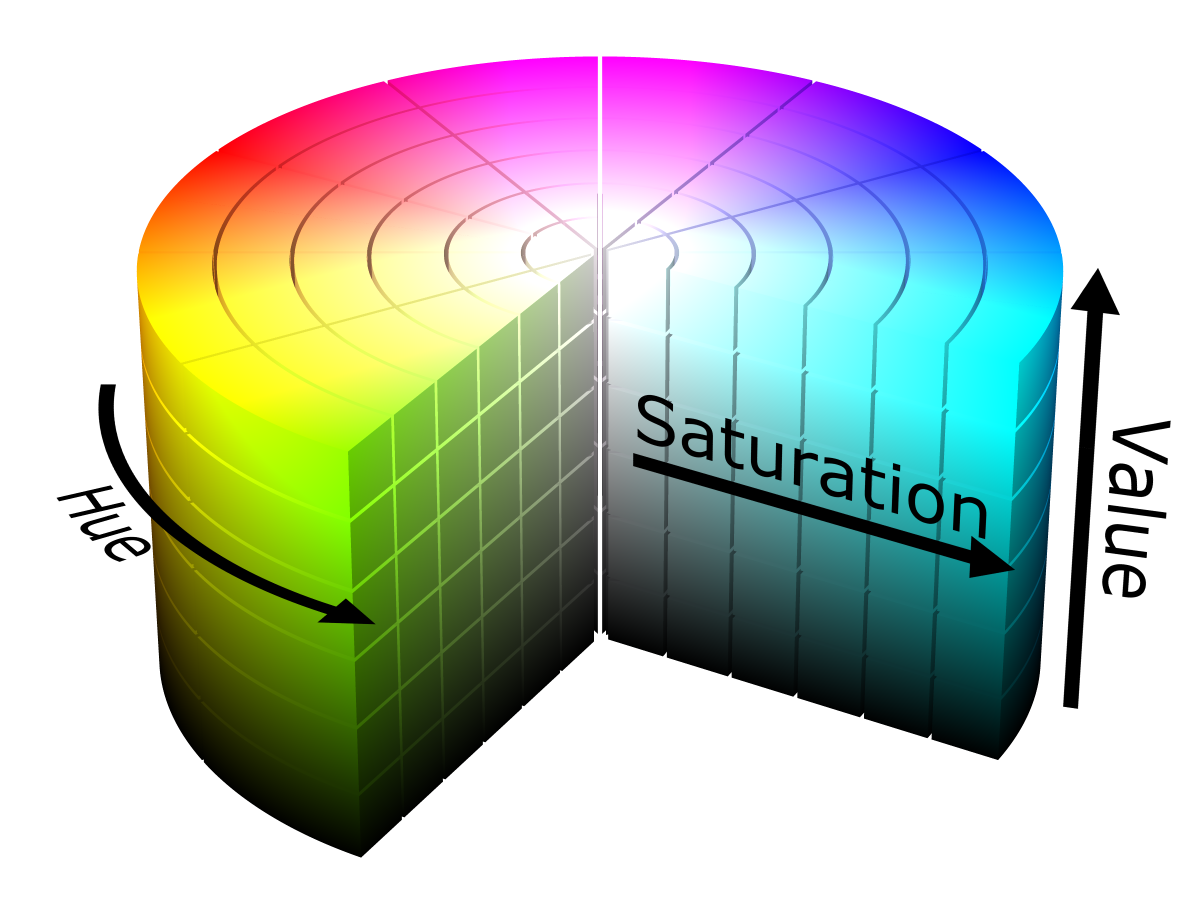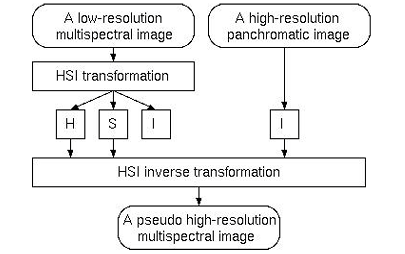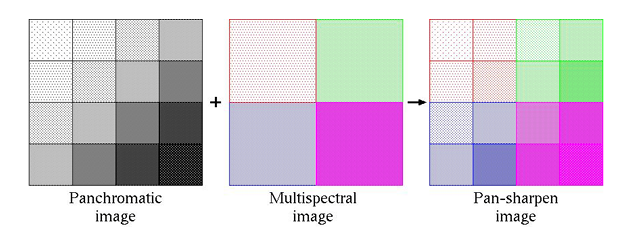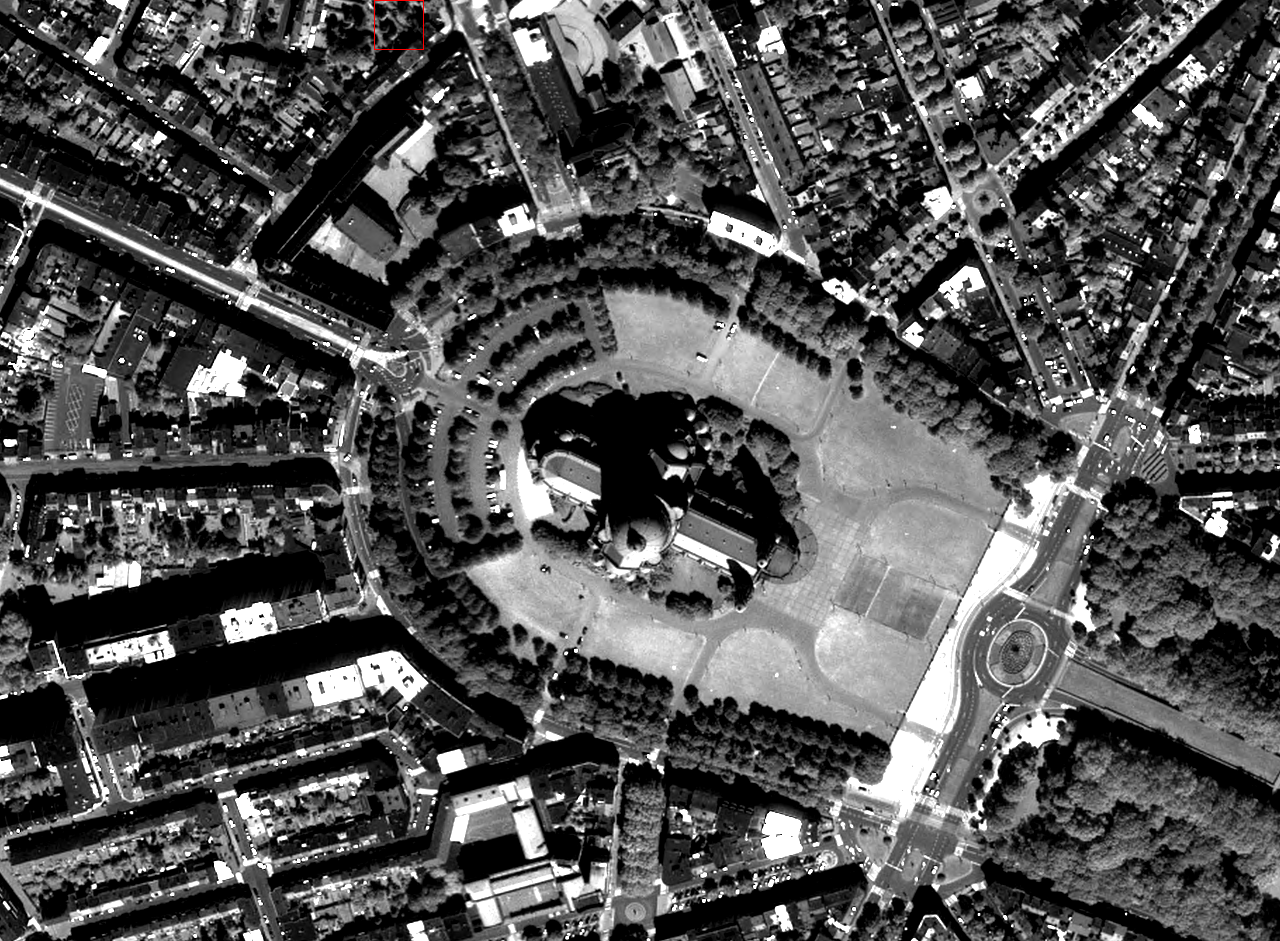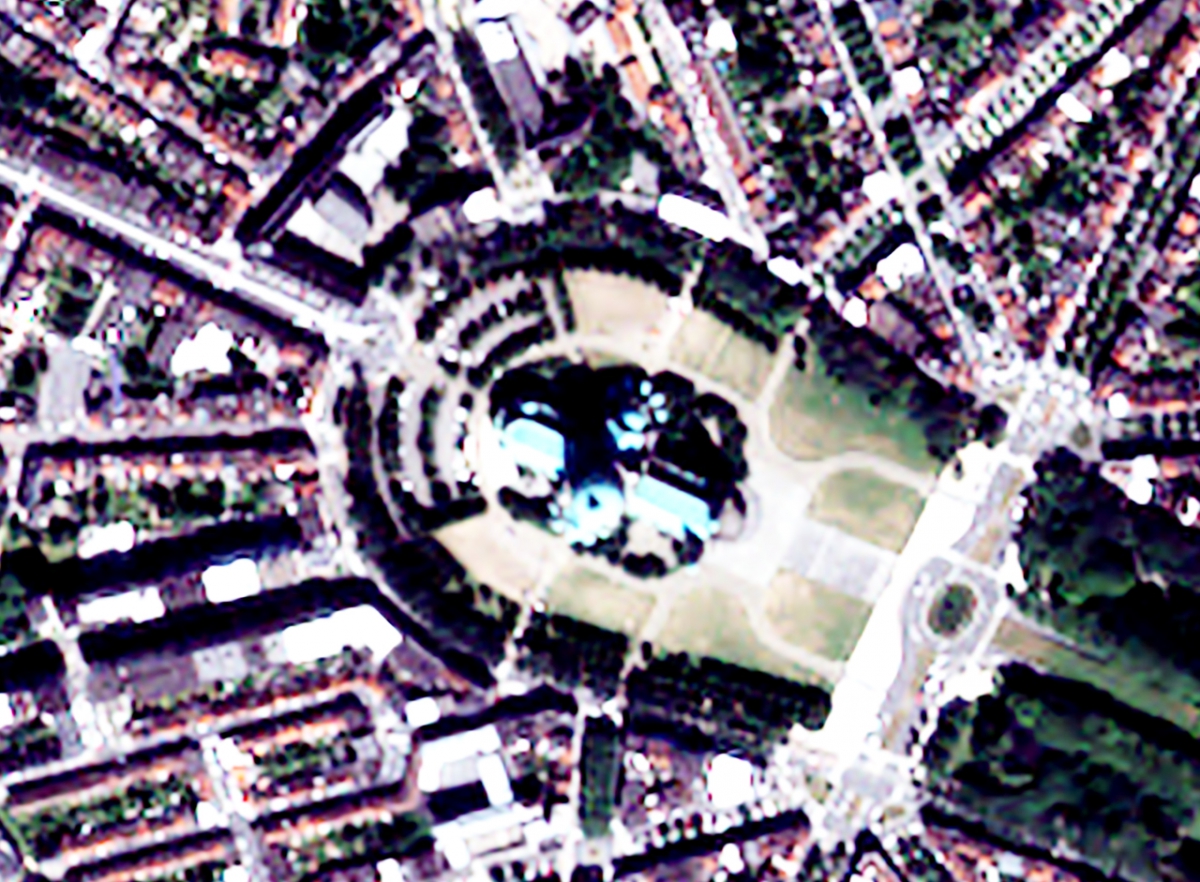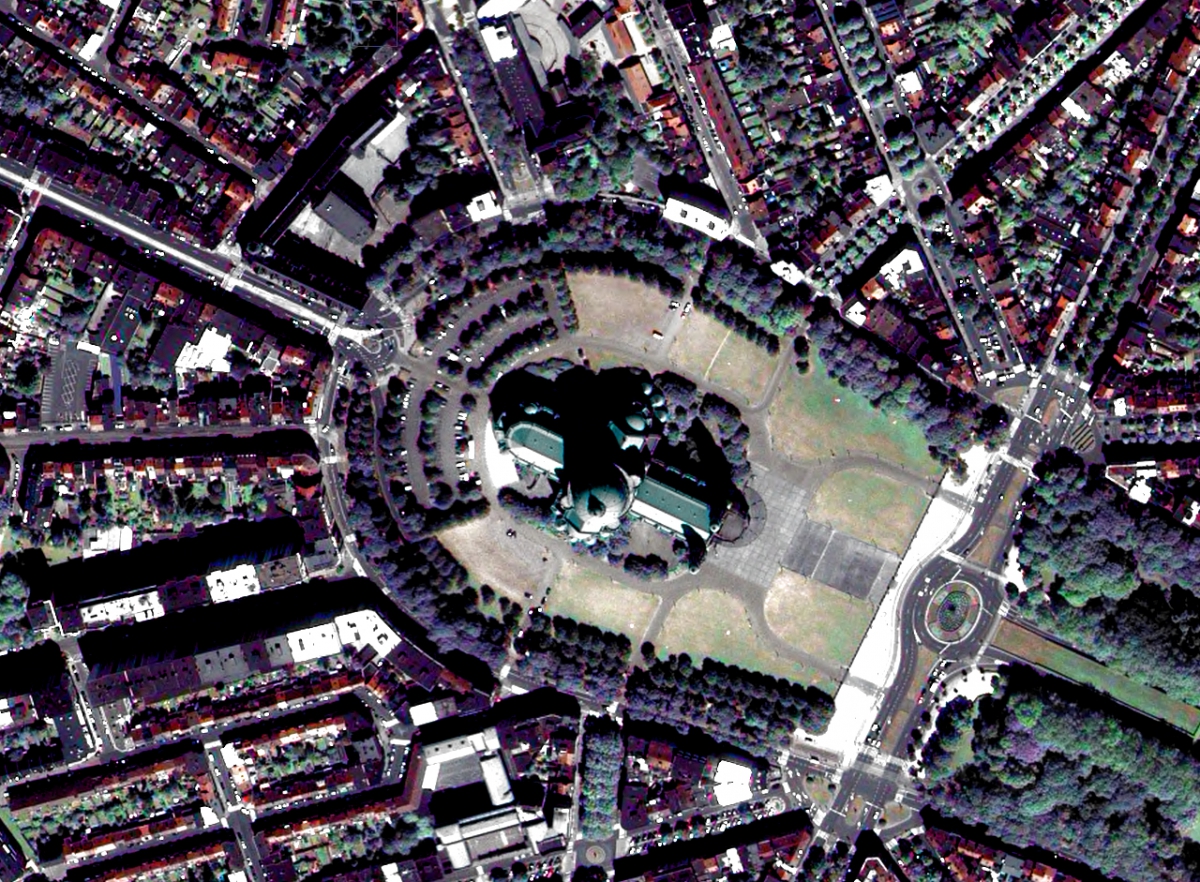IV - FROM DATA TO INFORMATION
3- HOW CAN WE EMPHASISE CERTAIN IMAGE CHARACTERISTICS (IMAGE TRANSFORMATION)?
To facilitate the interpretation and analysis of digital images, we can transform them. This involves applying computational operations to the original spectral data to combine them and transform them into "new" images that highlight certain elements of our field of study. For example, we can increase the spatial resolution of a multispectral image by merging it with a panchromatic one using an operation called "pan-sharpening" (see also Spectral resolution). In addition, we can also calculate so-called band-indices or spectral ratios to bring out certain features of the study area in the images (e.g. photosynthetic activity).
3.1- Pan-sharpening
Images obtained by the various types of sensors of earth observation systems have different characteristics, especially with regard to the number of spectral bands and spatial resolution (pixel size). In general, there is a trade-off between these two parameters. Indeed, multispectral data have lower spatial resolutions than data captured in a panchromatic mode (a single, wide spectral band covering the entire spectrum of visible light).
For some applications, however, we want the best of both aspects: high spatial resolution AND multispectral data. This is possible if we merge a low-resolution multispectral image and a high-resolution monospectral image into an image that combines both advantages.
This can be done by splitting the multispectral image (the true colour image in the Pléiades illustration below, registered in red, green and blue - RGB) into three components that describe the colour of each pixel: the hue, saturation and intensity (HIS).
This transformation of the coordinate system of the RGB colour model is called "RGB to HSI" (red, green, blue to hue, saturation, intensity) or "RGB to HSV".
We then replace the intensity component of the low-resolution image with the panchromatic image and perform the reverse transformation ("HSI to RGB").
For example, each pixel of multispectral Pleiades image (2mx2m) is divided into four pixels of 50cmx50cm. The intensity component of the low-resolution image is then replaced by the high-resolution image and the reverse transformation ("HSI to RGB") is performed. Source: Y. Mitani and Y. Hamamoto, "A Study of Pansharpened Images Based on the HSI Transformation Approach," Journal of Software Engineering and Applications, Vol. 5 No. 12B, 2012, pp. 163-166.
To illustrate this technique using satellite images, below is a detail of a Pléiades satellite image of the Basilica of Koekelberg in Brussels. The multispectral (XS mode of the satellite, with a resolution of 2m) and panchromatic (P mode, resolution of 50 cm) images were fused to form a multispectral image with a resolution of 50 cm (pan-sharpened image).


